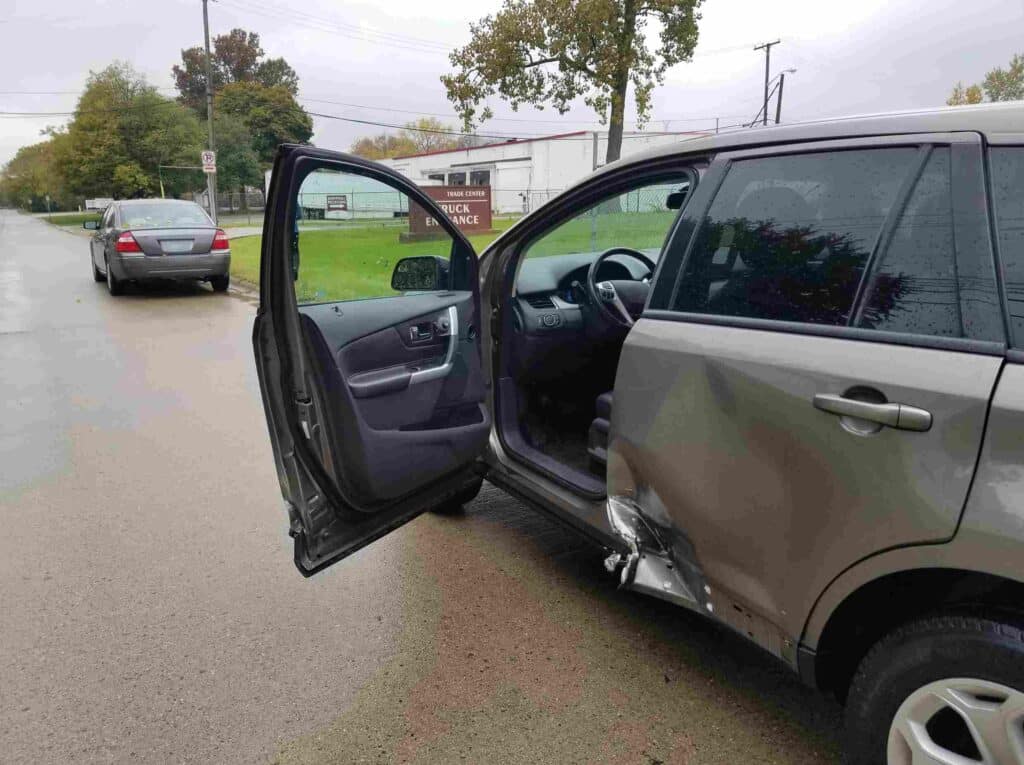Being involved in a motor vehicle accident can significantly impact your life. This is especially true if you suffer a serious injury that requires extensive medical treatment and a prolonged time off of work. Unfortunately, thousands of people across Minnesota are injured as a result of accidents that occur every year.
Many victims involved in accidents face thousands of dollars in medical expenses and lost wages. Trying to cover the costs of medical treatment and wage loss can be quite challenging.
For this reason, many victims of car accidents take legal action by pursuing a personal injury claim following their accident. These claims can be against your own insurance company, called a no-fault claim, and a personal injury or bodily injury claim against any at fault driver and their insurance company. Our accident lawyers in Minneapolis can help you understand your rights after an accident and can explain to you how Minnesota’s no-fault insurance laws may impact your potential claims.
Minnesota’s No-Fault Insurance Law
When it comes to car accident injuries, the state of Minnesota follows a “no-fault” insurance system. Sometimes people mistakenly believe this to mean that you are unable to bring a claim against an at-fault party. This is not true, however. The no-fault insurance claim is only one part of your potential claims following a car accident. Minnesota’s no-fault system requires all owners of motor vehicles to carry no-fault insurance. No-fault insurance will then pay for certain benefits if you are injured as the result of the maintenance or use of a motor vehicle, regardless of who is at fault for causing the accident.
Typically, if you are injured in a car accident. You will go through your own insurance to recover your no-fault benefits. However, if you do not carry your own no-fault insurance, you may be able to obtain the coverage through the policy of any relatives who you live with, through the vehicle you are occupying at the time of the incident, or, if you are pedestrian or bicyclist, through the driver that hit you.
Because of the complicated nature of where you should obtain no-fault benefits following a car accident, it is important to speak with an experienced personal injury lawyer who is familiar with the no-fault system.
What does No-Fault Insurance Cover?
No-fault insurance provides coverage for certain benefits if you are injured in a motor vehicle accident. These typically include:
- $20,000 in medical expenses and the reasonable transportation costs to and from your appointments;
- $20,000 in lost wages, paid out at 85% of your lost wages, capped at $500 per week;
- Replacement services, paid out at $200 per week (part of the $20,000 in wage loss benefits);
- If there is a death, funeral expenses up to $5,000.
These benefits add up to a combined total of $40,000, the minimum requirement established by law. Individuals can purchase coverage beyond these minimum requirements.
Medical expense benefits are paid out for any treatment that is reasonable in cost, medically necessary to treat your injuries, and for injuries related to the motor vehicle accident.
Wage loss benefits are generally payable in two situations. First, if you miss time from work to attend medical appointments. Second, if you have been restricted from working by a doctor.
Replacement services benefits are paid out if your doctor has restricted you from performing activities around the home that you ordinarily would take care of, for example, yard work, snow removal, cleaning, etc. However, replacement services benefits are not payable until the 8th day after the accident.
How No-Fault Insurance Laws Can Affect Your Personal Injury Claim Against Any At-Fault Driver
Minnesota’s no-fault system has limited the situations in which you can bring a claim against an at-fault driver and their insurance company. The law requires that an injured person meet one of five so-called no-fault “thresholds” before they have the legal right to pursue a personal injury claim against the at-fault driver. These thresholds are as follows:
- You must have incurred at least $4,000 in medical expenses as a result of your accident (excluding x-rays);
- You must have experienced 60 days or more of disability;
- You must have sustained a permanent disfigurement;
- You must have sustained a permanent injury; or
- There has been a death resulting from the accident.
If you have met one of these thresholds, you have the legal right to pursue a personal injury claim against the at fault driver and their insurance company to seek additional compensation for your losses. This compensation includes any past and future medical expenses and wage loss that has not been paid for through your no-fault claim, and past and future pain and suffering, disfigurement, emotional distress, and loss of enjoyment of life.
Working with our experienced Minneapolis accident lawyers when pursuing your potential claims after a car accident will help to ensure you are aware of your rights and that everything possible is done to protect them.
No-Fault Insurance Does Not Apply To Property Damage
It is important to understand that the no-fault laws in Minnesota only apply to the injuries that you suffered from your accident. It does not cover any damage to your vehicle. In order to recover damage to your property, you can go through any at fault driver’s insurance company, or your own if you have collision coverage.
Proving Negligence After Your Minnesota Car Crash
When pursuing your personal injury claim against an at fault driver, you must be able to prove negligence. In Minnesota, negligence is a failure to exercise reasonable care to another person. As a result of this failure, you suffered harm or injuries. To prevail, a victim must be able to demonstrate the elements of negligence when filing your case. This includes:
- Duty: The involved party must have a legal obligation towards the injured party;
- Breach: The involved party must have violated that obligation either through their actions or by failing to act;
- Cause: The violation must have directly and proximately resulted in the injury sustained;
- Damages: The injured party must have experienced tangible damages, such as medical expenses, wage loss, and pain and suffering.
Our Minneapolis personal injury lawyers can analyze the facts of your case to determine if another party was negligent. We will help you prove these elements existed so that you can get justice and fair compensation.
Let Our Minneapolis Personal Injury Lawyers Help You
At Nelson Personal Injury, we understand that accidents and injuries can happen in many ways. That’s why our Minneapolis personal injury lawyers are dedicated to representing clients who have been injured due to the negligence of others.
We handle many types of injury claims, from motor vehicles, to dog bites, to slip and falls, to construction accidents. Our experienced attorneys have fought for our client’s rights for over 40 years, taking on large insurance companies and recovering millions of dollars in compensation. But beyond just seeking financial recovery, we strive to provide our clients peace of mind during a difficult time.
If you or a loved one has been injured, contact our accident lawyers in Minneapolis as soon as possible to schedule a free consultation. Our compassionate team will guide you through the legal process and fight for your rights every step of the way.






